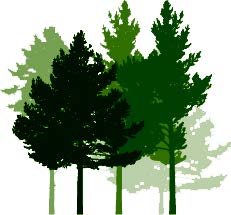Search technical reports
The decay resistance of six Eucalyptus species after seven years four months exposure
By Jackie van der Waals, Ian Simpson, and Tripti Singh, October 2023.
Download ITP-TR012 (pdf)
Executive summary
Durability stakes and stakelets were prepared from six different durable Eucalyptus species, (Eucalyptus bosistoana, Eucalyptus quadrangulata, Eucalyptus pilularis, Eucalyptus sphaerocarpa, Eucalyptus globoidea, Eucalyptus muelleriana). These Eucalyptus species had been selected as they are considered to have high natural durability. For each species, timber had been selected from four different trees with samples taken from both inner and outer heartwoods.
Control stake and stakelet samples from Pinus radiata sapwood, Fagus sylvatica (European beech), and H3.2 and H4 CCA treated Pinus radiata sapwood were also included in the test.
The stakes were exposed outdoor at Scion’s Whakarewarewa outdoor exposure site, and the stakelets were installed in the Scion’s Accelerated Decay House (with a temperature of 27°C and a relative humidity of 85%).
Summary of the stakes: After seven years four months outdoor exposure:
- For Eucalyptus bosistoana, one stake has failed and the remaining 30 have well established to deep and severe decay.
- Eucalyptus quadrangulata, five stakes have failed and the remaining 30 stakes have well established to deep and severe decay.
- Eucalyptus pilularis, three stakes have failed and the remaining 39 stakes have well established to deep and severe decay.
- Eucalyptus sphaerocarpa, two stakes have failed and the remaining 48 stakes have well established to deep and severe decay.
- Eucalyptus globoidea, seven stakes have failed and the remaining 52 have well established to deep and severe decay.
- Eucalyptus muelleriana, six stakes have failed and the remaining 50 stakes have extensive established to deep and severe decay.
- The differences for inner and outer heartwood between trees of the same species is minimal, except for trees where there has been stake failures.
For the controls:
- All the untreated Pinus radiata control stakes have failed giving the group an average life of 2.1 years.
- All Fagus sylvatica (European beech) control stakes have failed giving the group an average life of 2.1 years.
- In comparison, the H3.2 CCA treated stakes are rated 10 to 8 (sound to minor but established decay), one of the H4 treated stakes has failed and the rest of the group are rated 9 to 6 (minor to extensive established and deepening decay).
Summary of the stakelets: After 86 months exposure in accelerated decay conditions,
- For Eucalyptus bosistoana, 39 stakelets have failed and the one remaining stakelet has severe decay.
- Eucalyptus quadrangulata, all 40 stakelets have failed, giving an average life of 1.9 years for the four trees tested.
- Eucalyptus pilularis, all 40 stakelets have failed, giving an average life of 2.3 years for the four trees.
- Eucalyptus sphaerocarpa, all 40 stakelets have failed, giving an average life of 3.0 years for the four trees.
- Eucalyptus globoidea, all 40 stakelets have failed, giving an average life of 2.9 years for the four trees.
- Eucalyptus muelleriana, all 40 stakelets have failed, giving an average life of 1.7 years for the four trees.
Across the six Eucalyptus species, stakelets from 22 individual trees have failed giving them a group average life between 1.4 to 4.2 years. Only one E. bosistoana stakelet remains with a rating of 4 (severe decay). Soft rot has been the main cause of stakelet failures.
The outer heartwood is performing slightly better in most trees when comparing their Indexes of Condition (I o C) to the inner heartwood I o C. In individual trees where both inner and outer heartwood stakelets have failed, the average life between the inner and outer heartwood is often the same or the outer heartwood has lasted a few months longer, except for Tree 2 E. bosistoana where the inner heartwood has an I o C of 3.4 years and the outer heartwood 5.0 years.
- The untreated radiata pine sapwood stakelets had all failed by the 17-month assessment giving the group an average life of 8.9 months.
- The untreated European beech sapwood stakelets had all failed by 11 months giving the group an average life of 6.5 months.
- Five stakelets have failed in the H3.2 group; no failures have occurred in the H4 CCA treated group.
The stakelets have considerably lower I o C when compared to the in-ground stakes due to their exposure in the Accelerated Decay House (ADH). The ADH facility is a quicker method to screen samples, but field testing is still required to confirm suitability to outside exposure conditions.
The trials will continue with the stakelets being assessed at three monthly intervals and the next stake inspection will be conducted in June 2024.

 Specialty Timbers New Zealand
Specialty Timbers New Zealand
No posts yet
Add a post